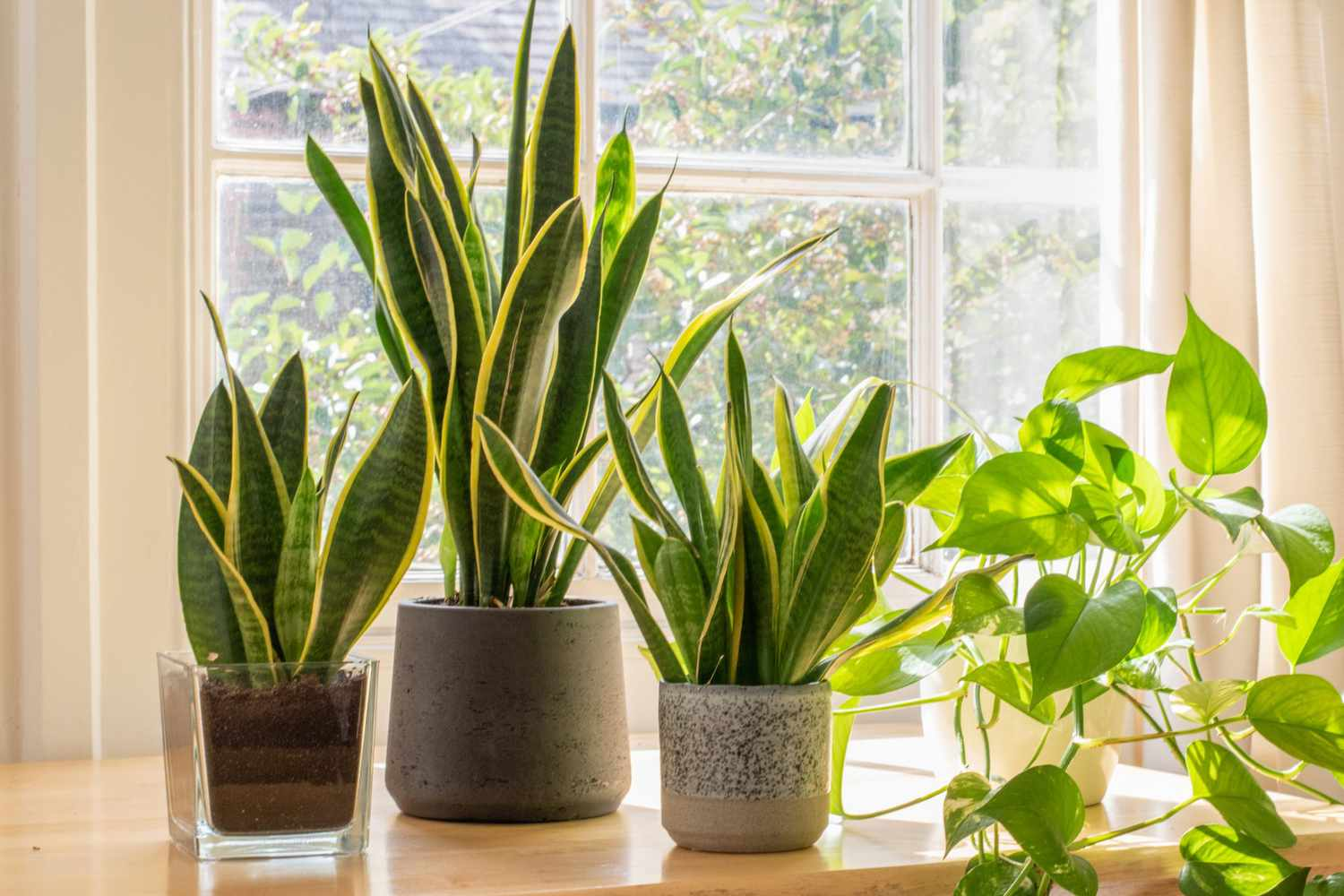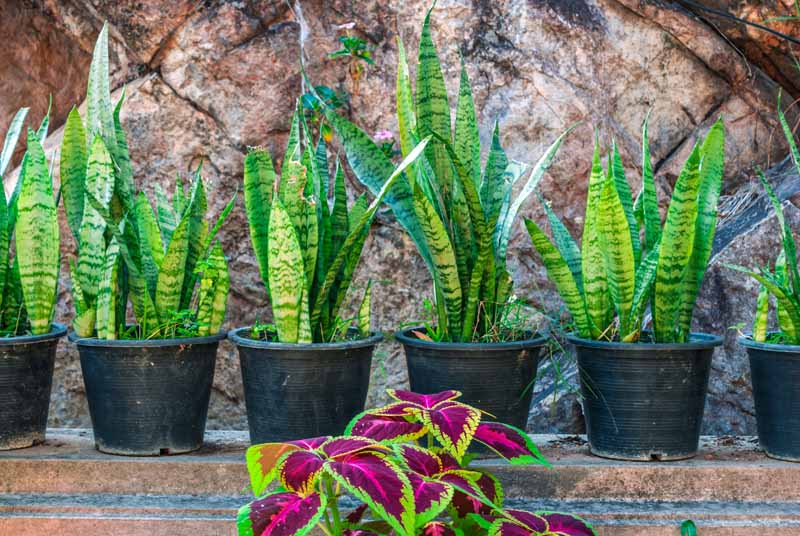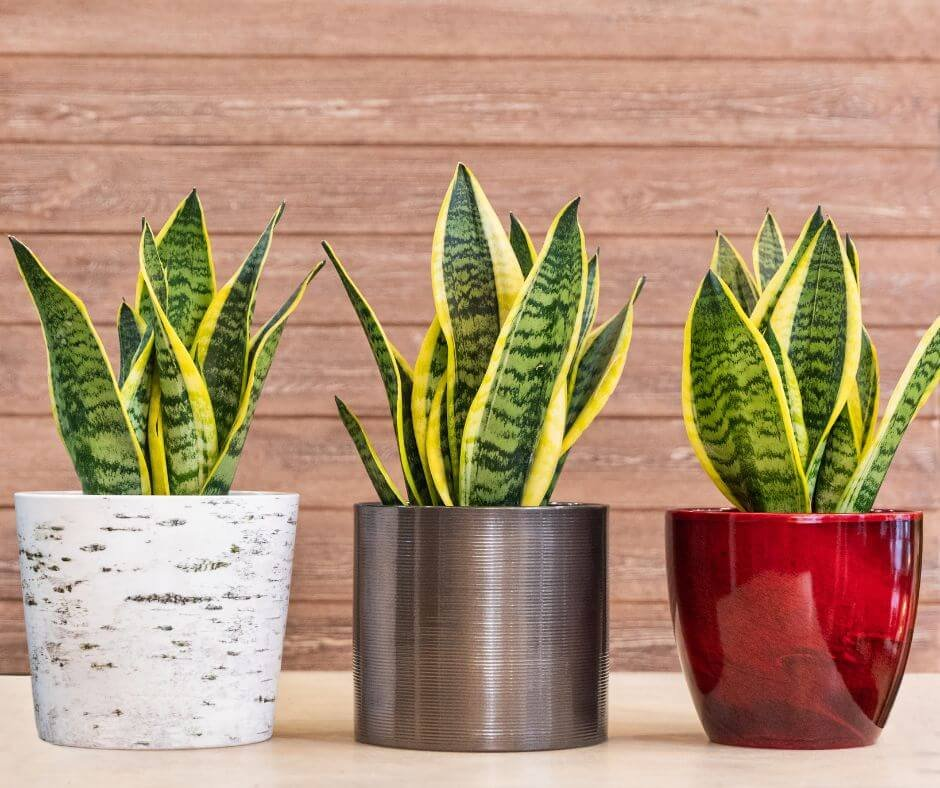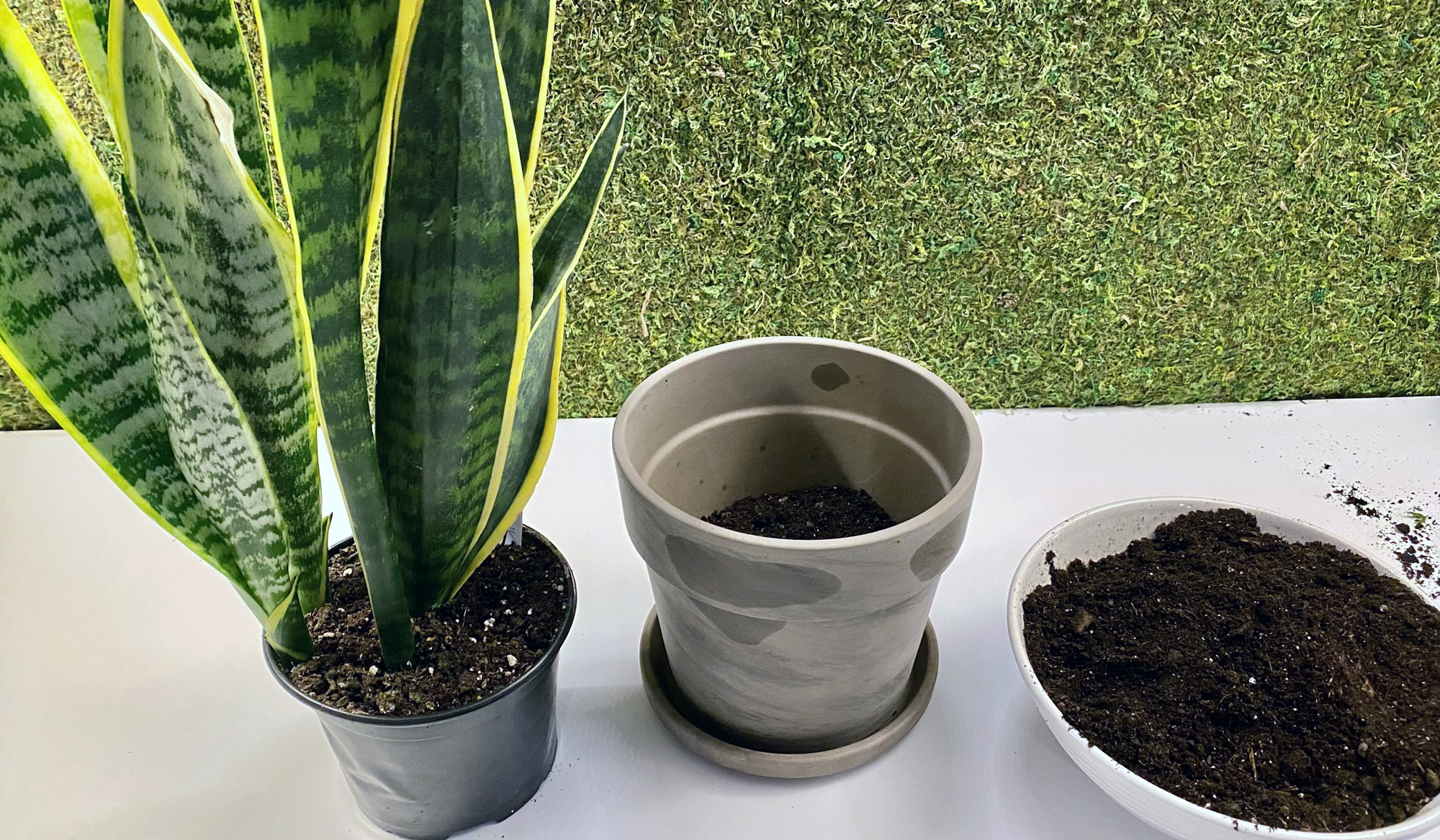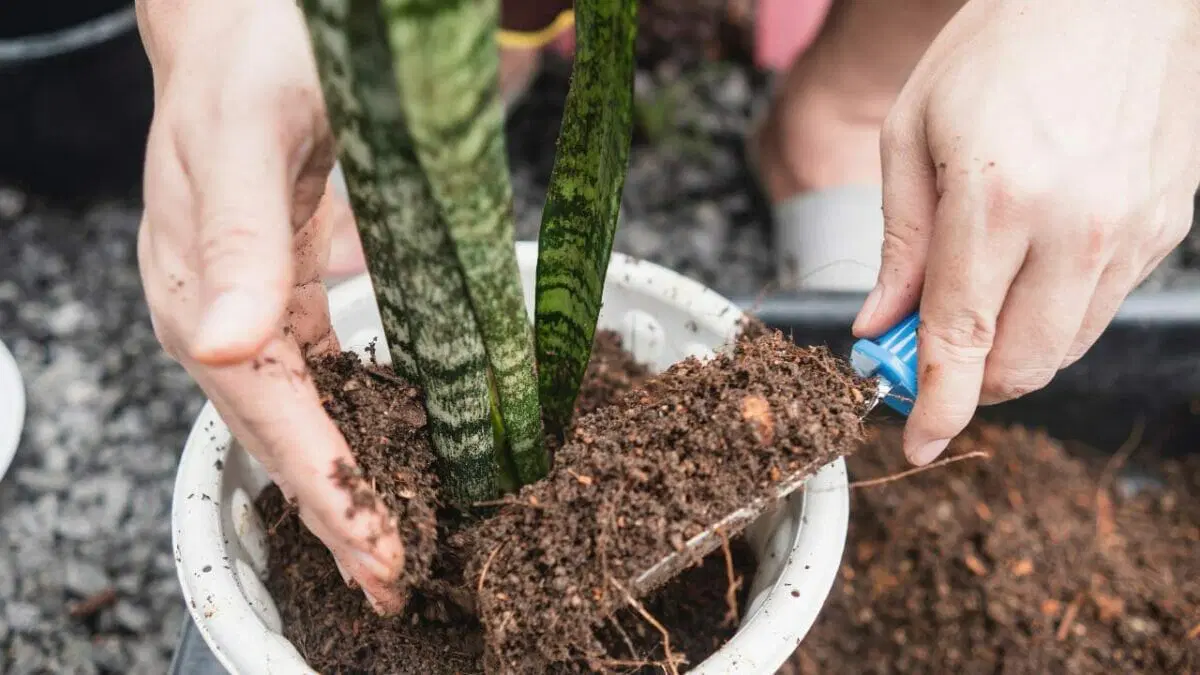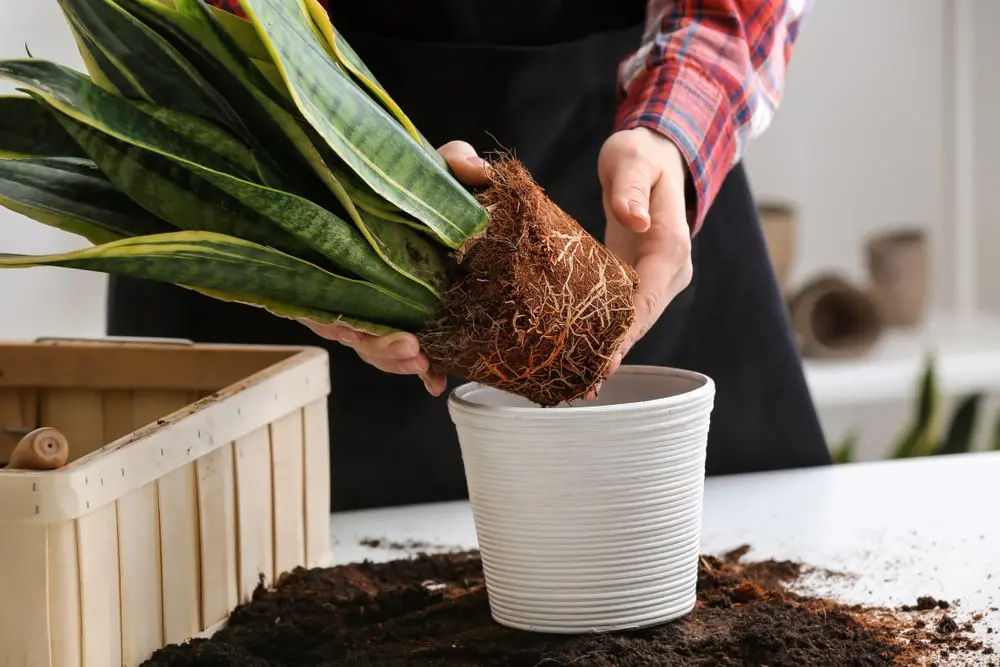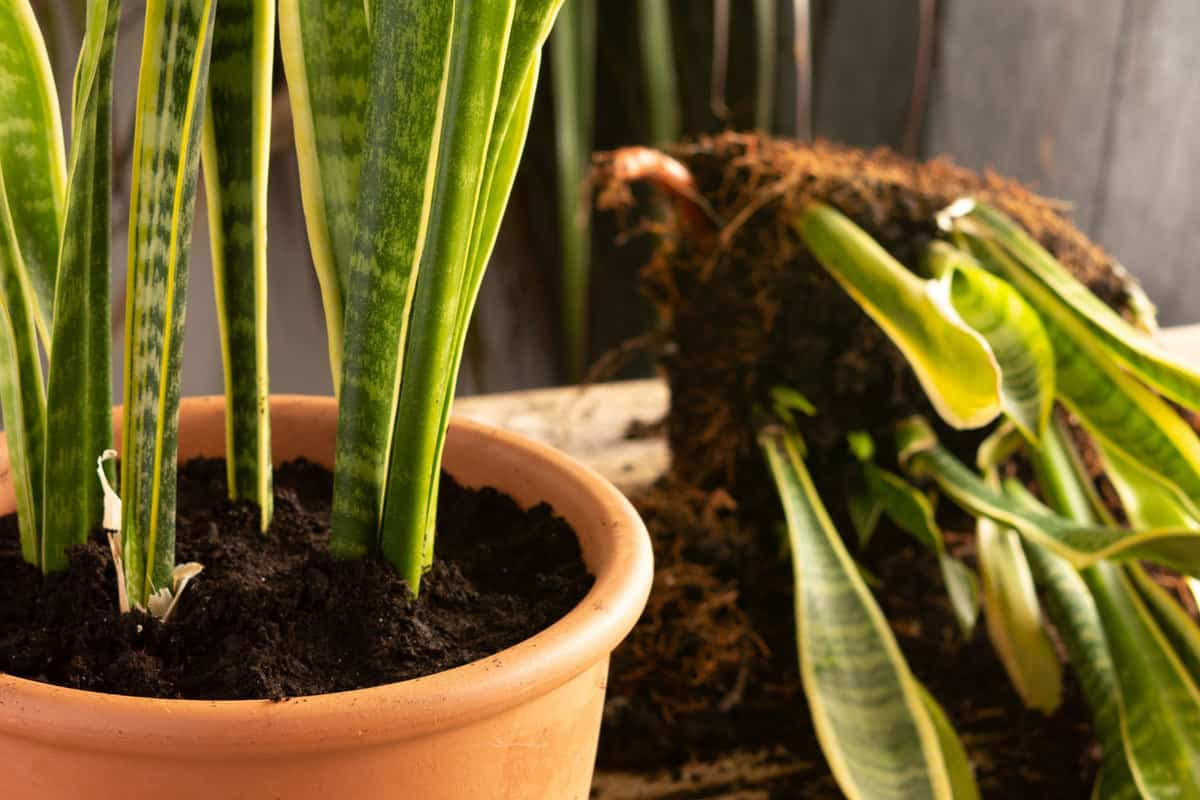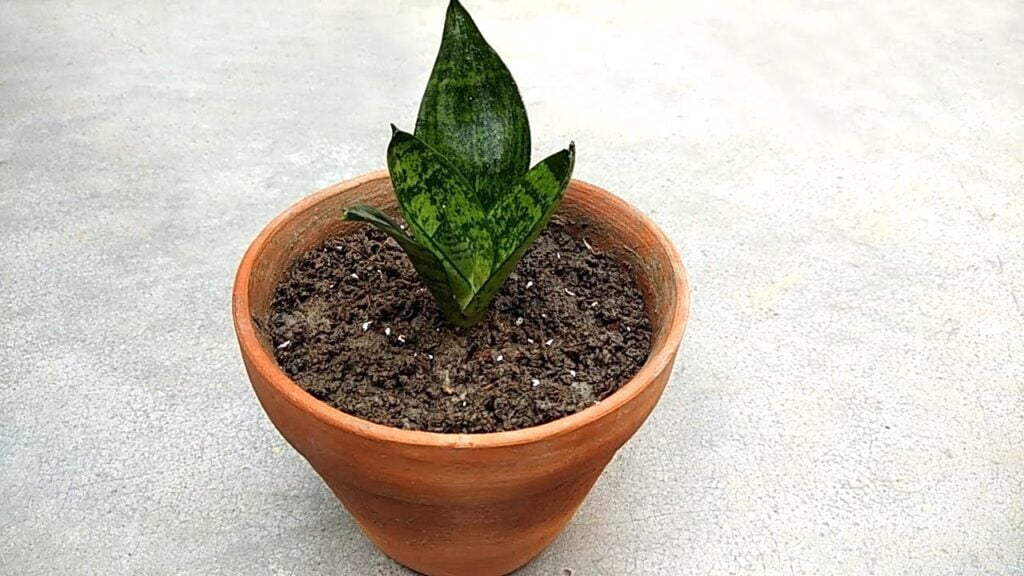HousePlantJoy is supported by our audience. When you purchase through one of our links, we may earn a small affiliate commission. As an Amazon Associate I earn from qualifying purchases. Your cost is not affected.
==================
As someone who has nurtured numerous snake plants over the years, I’ve learned that the size of the pot you choose can significantly impact your plant’s health and growth. Selecting the right pot ensures your snake plant has ample room to thrive without running into root rot or stunted development. In this guide on the best pot for snake plants, I’ll share my insights and experiences to help you choose the perfect pot size, creating the ideal environment for its optimal growth.
Best Pot for Snake Plant: Optimal Growth Guide
Photo by: Martha Stewart
The best pot for snake plant is key to its health and growth. Snake plants are known for being tough and low-maintenance, but they still need the right environment to thrive, starting with a good pot. It’s easy to pick a pot based on looks alone, but balancing aesthetics with the plant’s needs is important.
A pot that’s too big can hold too much moisture, leading to root rot, while a pot that’s too small can cramp the roots and make the plant unstable. The material of the pot matters, too. Porous materials like terracotta or unglazed ceramic are great because they let the soil breathe and help prevent waterlogging.
Repotting your snake plant is not just about moving it to a new pot; timing and technique are crucial for its success. Make sure your pot has good drainage and repot at the right time in the right-sized pot to avoid issues like stunted growth or root disease. Let’s dive deeper into finding the best pot for your snake plant.
Key Takeaways:
• Pot size: Choose a pot just slightly larger than your snake plant’s root ball. This ensures proper drainage and space for root growth.
• Material: Opt for pots with drainage holes and porous materials like terracotta. These prevent root rot and allow for good air circulation.
• Repotting: Repot your snake plant every 2-3 years or when the roots outgrow the pot. Use a new pot with fresh potting mix and drainage holes.
Getting to Know Snake Plants: A Comprehensive Guide
Photo by: Gardener’s Path
First, let’s get to know snake plants. Scientifically known as Sansevieria, these resilient houseplants are incredibly popular. In this section, we’ll explore their botanical framework and growth traits, crucial for understanding how to choose the best pot.
Snake plants are those sturdy, upright plants you often see with leaves ranging in color from deep green to variegated patterns. Originally from tropical West Africa, these plants have adapted to do well in many indoor conditions, which is why they’re popular with both new and experienced gardeners.
Growth Characteristics
Growth Rate: Typically slow-growing
Root Structure: Rhizomatous
Size: Can reach up to 2 meters in height
Snake plants are known for their laid-back approach to growth. They typically take their time reaching their full height, which can span up to 2 meters over several years. Beneath the surface, these plants boast a root system that’s all about resilience. Thanks to their rhizomatous structure, their roots are thick and spread out.
This adds to their robustness and makes them easy to propagate. When picking the best pot for snake plant, it’s important to keep these roots in mind. They need enough room to stretch out without feeling cramped. Plus, you’ll want a pot that can handle the weight and height of the mature plant to keep it standing tall and proud.
How Do You Choose the Perfect Pot for Your Snake Plant?
Photo by: Gardeners Basic
When picking out a best pot for snake plant, the two main things to consider are its width and depth. These factors greatly impact how healthy and how well your plant will grow. The best pot size will provide enough space for the roots to spread out comfortably without being too cramped.
Pot Diameter
The pot size needed to align with the size of your snake plant’s root ball. If the pot is too big, it can hold onto too much water, which might lead to root rot. On the other hand, a pot that’s too small can cramp the roots and affect how water is distributed.
For slow-growing snake plants, a pot 1-2 inches larger than the current size is usually best for promoting optimal growth. Consider a pot 2-4 inches larger if you’ve got a faster-growing variety. This will give the roots more space to spread as the plant grows quickly.
Pot Depth
The depth of the pot is just as crucial as its diameter when it comes to keeping your snake plant happy. Snake plants like their roots to spread out downward. So, it is important to choose the best pot size that gives them enough vertical space to grow without getting tangled or cramped at the bottom.
A pot that’s too deep can keep the lower soil wet and unused, eventually causing problems like root rot. A good rule of thumb is to pick a pot with a depth roughly the same as or slightly deeper than the root ball’s height. This way, your snake plant’s roots will have the right room to spread and thrive.
Choosing the Right Pot Material for Your Snake Plant
Photo by: Bigger Garden
When picking out the best pot for snake plant, think about what it’s made of. The material matters because it affects how well water drains, how much air gets to the roots, and how heavy the pot will be. These things are important for keeping your plant healthy and helping it grow well.
Weight
Considering the pot’s weight is practical, especially if you plan to move the plant around often. Plastic pots were lightweight and easy to handle, making them convenient for moving your snake plant. On the other hand, ceramic and terra cotta pots are heavier, but they offer more stability, which is particularly beneficial for taller snake plants. When choosing the best pot, consider the balance between ease of movement and stability based on your plant’s specific needs.
When to Repot
You’ll consider repotting snake plants every 2-3 years. Signs that your plant is due for a new home include roots peeking out of the drainage holes or the plant just stopping growing altogether. If your snake plant is getting top-heavy or the pot is cracking under pressure from its roots, those are clear signs it’s time to give it more space.
Step-by-Step Guide
Photo by: Meadows Farms
Let’s get started with repotting your snake plant:
- Gather Supplies: Get the best pot about 2 inches larger than the current one (choosing the best pot size), fresh potting soil, and garden gloves.
- Remove the Plant: Tilt the pot sideways and gently tap or squeeze the sides. Carefully pull the plant out, trying to minimize damage to the roots.
- Inspect the Roots: Examine the roots and trim any dead or excessively long roots to encourage healthy growth.
- Adding Soil: Before placing the plant in the new pot, put a layer of well-draining potting mix at the bottom.
- Position the Plant: To prevent water from spilling over, the snake plant should sit at the same soil level as in the previous pot, ideally about 1-2 inches below the rim.
- Refill the Pot: Add more potting mix around the sides, pressing lightly to remove large air pockets.
- Water: Once you’ve finished repotting, water your snake plant well.
Follow these steps, and your snake plant should be in its new pot!
Root Rot
Root rot in snake plants usually occurs because of too much water and insufficient drainage. It is detected when the roots turn dark, mushy, and smell bad.
- To check for root rot, the plant was carefully lifted out of its pot, and the roots were examined.
- Clean pruning shears were used to trim off any roots that appeared brown or black.
- When you replant the snake plant, use fresh soil that drains well, like a mix of cactus or succulent soil and pumice. Make sure the pot has drainage holes.
Stunted Growth
If your snake plant shows signs of stunted growth, it could be trying to tell you something about its care. Here’s how you can encourage proper growth:
- Make sure your plant is in a manageable pot. An oversized pot can hold too much water, which might prevent the roots from growing properly.
- Check that your plant is getting enough light, though it doesn’t need direct sunlight.
- Review your feeding schedule. Less fertilizer can slow down your plant’s growth.
Aesthetics vs. Function
When picking out the best pot for snake plant, you’ve got to strike a balance between looks and what’s best for the plant. A great pot can bring out your snake plant’s architectural beauty. But it’s got to do more than look good – it’s got to keep your plant healthy, too.
Aim for a pot at least 10-12 inches deep for mature snake plants. Sturdy materials are a must to prevent your plant from tipping over. Terracotta and ceramic pots are super popular because they’re stylish and work well for plants.
Long-Term Considerations
Ensure you select a pot equipped with drainage holes to prevent water accumulation. When choosing the pot size, provide ample space for your snake plant’s roots to grow comfortably.
A good rule of thumb is to opt for a pot slightly larger than the plant’s current root ball. Large pots can prevent the soil from becoming waterlogged. To prevent this, increase the pot size gradually as the plant grows.
Choosing the Best Pot for a Thriving Snake Plant
Choosing the best pot for snake plant is critical for its health and growth. Over the years, I’ve learned through experience that the pot directly impacts the plant’s well-being, influencing factors like moisture levels, root development, and overall stability.
A pot with adequate drainage is essential to prevent waterlogging and root rot while ensuring the pot size allows room for the snake plant’s roots to grow comfortably is equally important. Opting for a pot slightly larger than the plant’s current root ball provides space for growth without overwhelming the plant with excess soil moisture.
Remember, the pot’s material also plays a role. Porous materials like terracotta or unglazed ceramic help regulate soil moisture and promote root health. Handling the process carefully is crucial when repotting, ensuring the plant transitions smoothly into its new home.
Is It Better for Snake Plants to Have Deep Pots or Shallow Ones?
Deep pots are preferable because snake plants’ roots grow downwards; hence, they benefit from pots that provide ample depth for proper root development.
Can a snake plant thrive in a crowded pot?
Why Should You Use a Self-Watering Pot for Snake Plants?
Why Should You Join Us?
Get insider secrets: Unearth the best-kept tips to keep your plants thriving and blooming like never before.
Expert Advice: Gain access to our team on Facebook, Twitter, and other social media channels, and meet our gardening experts eager to help you on your plant journey.
Engage With Like-Minded Souls: Connect with fellow plant lovers, exchange stories, and build a supportive community. Join us today! Follow Houseplant Joy on Facebook, Instagram, and Twitter for daily inspiration and a blooming good time! #HouseplantJoy #GreenThumbsUnite #HouseplantLove


